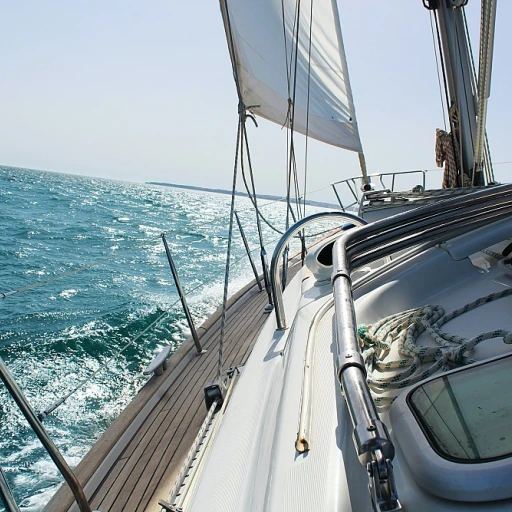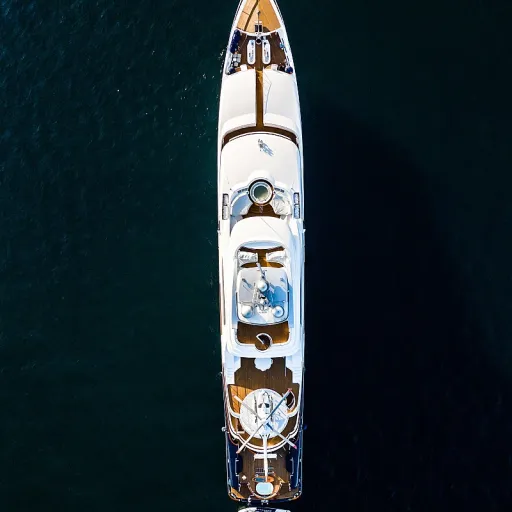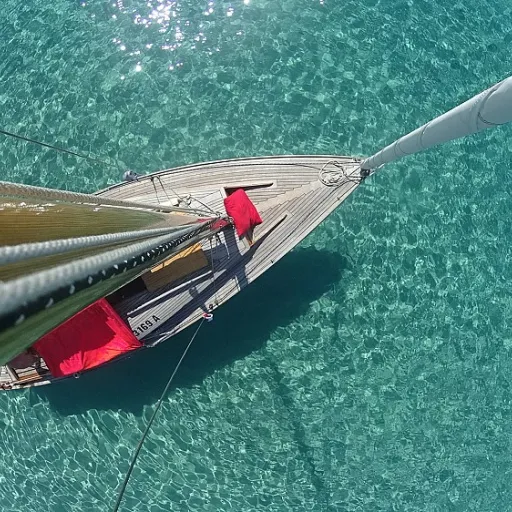
Understanding the role of jacklines in yacht safety
Why Jacklines Are Essential for On-Deck Safety
Jacklines play a critical role in yacht safety, especially when sailing at night or in challenging conditions. These strong webbing lines, often made from resistant anti-abrasion materials, run the length of your boat's deck, allowing crew members to stay securely tethered while moving about. The Wichard Lyf Safe jackline kit is a popular choice among sailors for its easy install features and robust stainless steel forged adjusters, which help prevent unpleasant vibrations and noise unpleasant during use.
When you’re on deck, especially in rough weather, a safe jackline system can be the difference between a minor slip and a serious accident. The jackline acts as a lifeline, connecting your safety tether to a secure anchor point. This setup ensures you remain attached to the boat, even if you lose your footing. A well-installed jackline is easily identified on deck, thanks to its bright color and loop free design, reducing the risk of tripping or snagging.
- Jacklines should be long enough to cover the length of your boat, but not so long that they create slack or hazards.
- Webbing jacklines are preferred over wire for their flexibility and anti-abrasion casings, which protect both the deck and the line itself.
- Wichard Lyf Safe jacklines come with free forged adjusters and robust casings, making them resistant to wear and easy to adjust for any deck layout.
Customer service and product reviews often highlight the importance of choosing a jackline kit that is both durable and easy to install. A good kit will include all necessary components, such as forged adjusters and anti-abrasion webbing, ensuring long-term reliability and safety for all boats, from small sailing yachts to larger vessels.
For those looking to further enhance their yacht’s safety systems, consider reading this in-depth review of outboard propeller guards for additional protection on the water.
Choosing the right Wichard jackline for your vessel
Key factors when selecting Wichard jacklines
Choosing the right Wichard jackline for your boat is a crucial step for ensuring safety during sailing, especially at night or in rough conditions. Not all jacklines are created equal, and understanding the differences can make a real impact on your crew’s security and comfort.
- Material: Wichard lyf safe jacklines use high-quality webbing, often featuring resistant anti-abrasion casings. This helps reduce unpleasant vibrations and noise unpleasant when moving on deck. Stainless steel forged adjusters and loop free ends add extra durability and safety.
- Length: Measure the length of your boat’s deck to ensure the jackline kit you select fits perfectly. Wichard lyf safe jacklines are available in various lengths, so check the product details and reviews to match your needs. A jackline that’s too short or too long can compromise safety.
- Visibility: Easily identified sailing gear is essential. Opt for jacklines with bright, high-visibility webbing or reflective strips, making them easy to view even during sailing night operations.
- Adjusters and Casings: Look for jacklines with free forged adjusters and anti-abrasion casings. These features help maintain tension and protect the webbing from wear, especially in high-traffic areas on deck.
- Kit Completeness: A good jackline kit should include all necessary components for easy install, such as forged adjusters, webbing, and clear instructions. Check customer service feedback and product reviews to ensure you’re getting a comprehensive package.
Comparing Wichard lyf safe jacklines to alternatives
Wichard lyf safe jacklines stand out for their robust construction and thoughtful design. Their resistant anti-abrasion webbing and stainless steel hardware are engineered for the harsh marine environment. When reading reviews, pay attention to feedback on noise unpleasant, adjusters casings, and the ease of installation. Some sailors prefer the loop free design, which helps prevent snags and makes the system safer for quick movements on deck.
For a deeper dive into essential safety gear, including anchor lights, check out this guide to boat anchor lights.
What to look for in a safe jackline kit
- High-visibility, anti-abrasion webbing
- Forged stainless steel adjusters
- Loop free ends for added safety
- Clear instructions and easy install process
- Responsive customer service and positive reviews
Taking the time to review your options and match the jackline kit to your boat’s specific needs is a key step in maintaining a safe and efficient sailing experience. The right Wichard lyf safe jackline will provide peace of mind, letting you focus on the adventure ahead.
Step-by-step instructions for installing Wichard jacklines
Preparing Your Deck and Tools
Before starting the installation, ensure your deck is clean and free from debris. This helps the Wichard jackline kit’s webbing and forged adjusters sit flat and secure. Gather all necessary tools: a tape measure for accurate length, stainless steel shackles or forged adjusters, and a suitable tether. Review the kit contents and check for any missing parts. A quick inspection of the anti-abrasion casings and loop-free ends will help prevent issues later.Measuring and Positioning the Jacklines
Measure the length of your boat’s deck where the jacklines will run. The goal is to have the jacklines easily identified and accessible from bow to stern, while avoiding unpleasant vibrations or noise unpleasant when underway. Position the webbing along the side decks, ensuring it stays clear of obstacles and does not interfere with hatches or winches. If your boat has a unique layout, adjust the path to maintain a safe, unobstructed route.Securing the Jacklines
Attach the jackline’s ends to strong, fixed points on your deck. Use the Wichard lyf safe forged adjusters or stainless steel shackles for a secure connection. Make sure the webbing is flat, with no twists, and the anti-abrasion resistant casings are in high-wear areas. Tighten the adjusters so the jacklines are taut but not overly tight, allowing for some movement as the boat flexes. Avoid over-tensioning, which can lead to premature wear or damage.Final Checks and Adjustments
Once installed, walk the length of the jacklines with your tether attached to check for smooth movement and to confirm there are no snags. The jacklines should be easily identified and free from looped or slack sections. If you notice any issues, review the installation and adjust as needed. For more tips on long-term performance and to avoid common maintenance pitfalls, check out this guide on preserving your yacht’s safety gear.- Always use the recommended length for your boat to ensure safety
- Choose resistant anti-abrasion webbing for durability
- Check customer service reviews for the Wichard lyf safe jackline kit before purchase
Common mistakes to avoid during installation
Frequent Pitfalls When Fitting Wichard Jacklines
When installing Wichard lyf safe jacklines, even experienced sailors can make mistakes that compromise safety and performance. Here are some of the most common issues to watch out for on your boat:- Incorrect Length Selection: Choosing jacklines that are too short or too long for your deck can create slack or tension, reducing their effectiveness. Always measure the length of your boat and select the appropriate length jackline kit for a secure fit.
- Poor Anchor Point Choice: Attaching jacklines to weak or non-structural points can lead to failure under load. Use only strong, stainless steel anchor points that are designed for this purpose and have been reviewed for integrity.
- Twisted or Loop-Prone Webbing: Failing to lay the webbing flat can cause unpleasant vibrations and noise unpleasant when underway. Ensure the jackline lies flat and is loop free along the deck, avoiding any twists that could catch a tether or foot.
- Ignoring Anti Abrasion Features: Not using resistant anti abrasion casings or forged adjusters can lead to premature wear, especially in high-traffic areas. Wichard lyf safe jacklines come with adjusters casings and free forged hardware to enhance durability.
- Improper Tensioning: Over-tightening can stress the webbing and fittings, while under-tightening creates slack, increasing the risk of tripping or ineffective restraint. Use the provided adjusters to achieve the right tension for your deck layout.
- Inadequate Visibility: Jacklines that are not easily identified, especially during sailing night, can be a hazard. Opt for jacklines with high-visibility features so crew can view and use them safely in all conditions.
- Skipping the Kit Review: Not reviewing the entire jackline kit before installation can result in missing components or incompatible parts. Always check your kit and consult customer service if anything is unclear.
Best practices for using jacklines at sea
Practical tips for safe jackline use at sea
- Always clip on before stepping onto the deck. Whether sailing night or day, connect your tether to the Wichard lyf safe jackline before leaving the cockpit. This habit is crucial for safety, especially in rough conditions or when sailing shorthanded.
- Use the correct length tether. The tether should be long enough to allow movement but short enough to prevent going overboard. Many reviews recommend a double tether system for flexibility and redundancy.
- Stay on the windward side. When moving along the deck, keep to the windward side of the jacklines. This reduces the risk of being washed overboard and makes it easier to recover if you slip.
- Check for easy install and secure attachment. Before each passage, review the jackline kit installation. Ensure all forged adjusters, casings, and webbing are properly tensioned and free forged loops are secure. Loose or twisted jacklines can cause unpleasant vibrations or noise unpleasant at sea.
- Keep jacklines easily identified. Choose jacklines with high-visibility webbing or reflective stitching. This makes them easily identified even in low light, improving safety during night sailing.
- Minimize trip hazards. Lay jacklines flat and taut along the length of the boat. Avoid excess slack or crossing lines, which can create loop free hazards or snagging points.
- Use resistant anti-abrasion materials. Wichard lyf safe jacklines are designed with anti abrasion casings and stainless steel hardware. Regularly inspect for wear, especially at chafe points or where the jackline passes through adjusters casings.
- Communicate with your crew. Make sure everyone on board knows how to use the jackline kit and understands the importance of staying clipped in. A quick review before departure can prevent confusion and accidents.
Maximizing reliability and comfort underway
- Reduce noise and vibration. Secure jacklines tightly to minimize unpleasant vibrations and noise unpleasant, especially on longer passages. Some customer service feedback highlights the benefit of using anti-chafe sleeves at contact points.
- Adjust for your boat’s length. Select the correct length jacklines for your length boat. Wichard offers kits suitable for various boats, ensuring a snug fit and optimal safety coverage along the deck.
- Store tethers and hardware properly. When not in use, stow your tether and hardware to prevent damage and prolong the life of your safe jackline system.
Following these best practices ensures your Wichard lyf safe jackline system remains reliable, comfortable, and effective for all your sailing adventures. For more insights, check product reviews and consult your supplier’s privacy policy for details on customer service and support.
Maintenance and inspection tips for long-term reliability
Routine Checks for Reliable Jacklines
Regular inspection is key to keeping your Wichard jacklines safe and effective. Before each sailing trip, walk the length of the deck and visually check the webbing for any signs of wear, such as fraying, cuts, or fading. Pay close attention to areas near forged adjusters, casings, and stainless steel fittings, as these points can experience extra stress and may develop unpleasant vibrations or noise unpleasant if not properly maintained.How to Spot Issues Early
- Look for anti abrasion marks or areas where the webbing is thinning
- Ensure all adjusters and casings are free forged and not showing corrosion
- Check that the jackline kit remains loop free and easily identified along the deck
- Confirm that the length of the jacklines matches your boat’s requirements, especially after any adjustments













